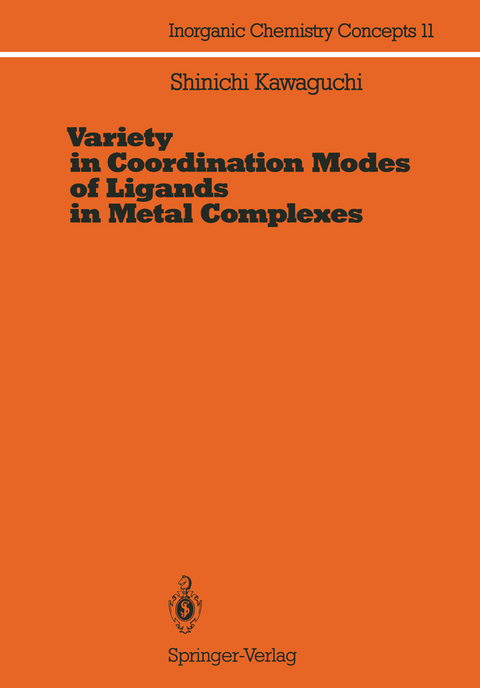
Variety in Coordination Modes of Ligands in Metal Complexes
Springer Berlin (Verlag)
978-3-642-50150-0 (ISBN)
1 Introduction.- 1.1 Classification of Ligands.- 1.2 Linkage Isomerism.- 2 Monoatomic Ligands.- 2.1 Coordination Modes for the Hydride Ligand.- 2.2 Chemical Reactions of Hydride Ligands.- 2.3 Role of Rhodium Hydride Complexes in the Catalytic Hydrogenation of Olefins.- 3 Diatomic Ligands.- 3.1 Coordination Modes for Carbon Monoxide.- 3.2 CO Cleavage and Reduction.- 3.3 Coordination Modes for Dinitrogen.- 3.4 Protonation of the Coordinated Dinitrogen.- 4 Triatomic Ligands.- 4.1 Coordination Modes for the Thiocyanate Ion.- 4.2 Infrared Spectroscopy for Determining the Coordination Modes of the Thiocyanate Ligand.- 4.3 Factors Influencing the Relative Stabilities of the N-bonded and S-bonded Thiocyanate Complexes.- 5 Polyatomic Ligands: ?-Dicarbonyl Compounds.- 5.1 Three Coordination Modes for Neutral Molecules.- 5.2 Coordination Modes for Monoanions.- 5.3 Coordination Modes for Dianions.- 5.5 Concluding Remarks.- 6 Abbreviations.- 7 References.
| Erscheint lt. Verlag | 5.5.2012 |
|---|---|
| Reihe/Serie | Inorganic Chemistry Concepts |
| Zusatzinfo | IX, 123 p. 51 illus. |
| Verlagsort | Berlin |
| Sprache | englisch |
| Maße | 170 x 244 mm |
| Gewicht | 248 g |
| Themenwelt | Naturwissenschaften ► Chemie ► Anorganische Chemie |
| Naturwissenschaften ► Chemie ► Organische Chemie | |
| Naturwissenschaften ► Chemie ► Physikalische Chemie | |
| Schlagworte | Bonding • carbon • catalyst • chemical reaction • Coordination Chemistry • iron • metals • Rhodium • spectroscopy |
| ISBN-10 | 3-642-50150-8 / 3642501508 |
| ISBN-13 | 978-3-642-50150-0 / 9783642501500 |
| Zustand | Neuware |
| Haben Sie eine Frage zum Produkt? |
aus dem Bereich


